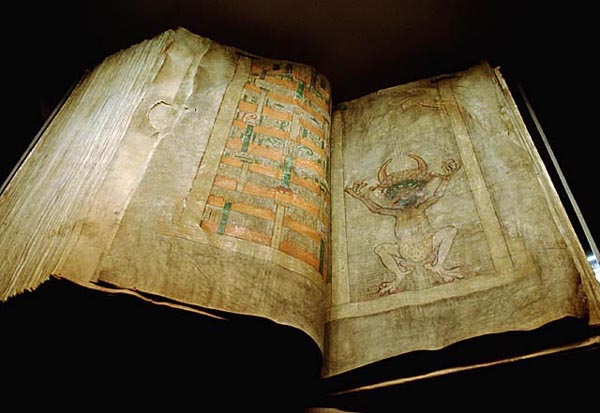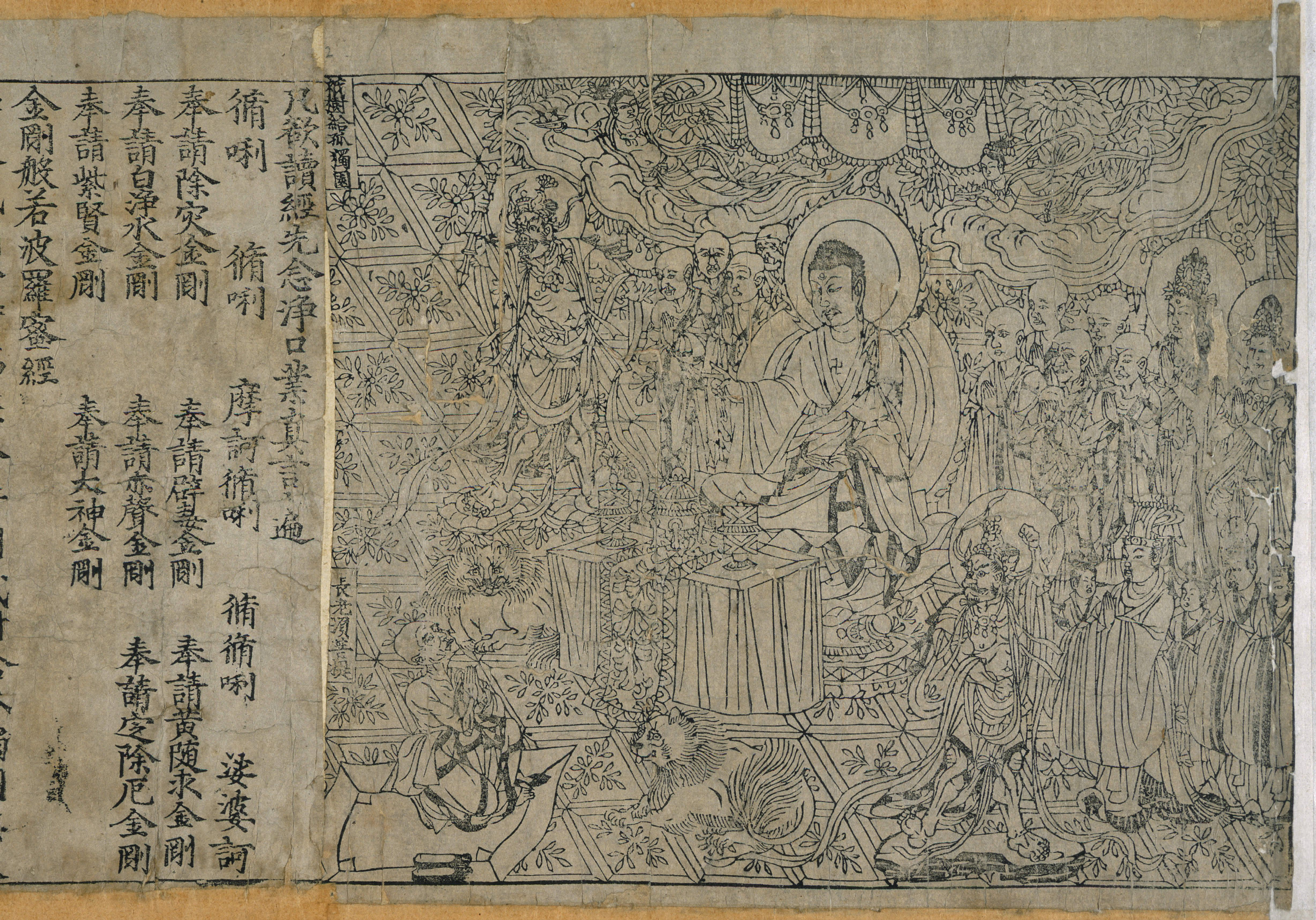|
Bookbinding
Bookbinding is the process of building a book, usually in codex format, from an ordered stack of paper sheets with one's hands and tools, or in modern publishing, by a series of automated processes. Firstly, one binds the sheets of papers along an edge with a thick needle and strong thread. One can also use loose-leaf rings, binding posts, twin-loop spine coils, plastic spiral coils, and plastic spine combs, but they last for a shorter time. Next, one encloses the bound stack of paper in a cover. Finally, one places an attractive cover onto the boards, and features the publisher's information and artistic decorations. The trade of bookbinding includes the binding of blank books and printed books. Blank books, or stationery bindings, are books planned to be written in. These include accounting ledgers, guestbooks, logbooks, notebooks, manifold books, day books, diary, diaries, and sketchbooks. Printed books are produced through letterpress printing, offset printing, offset litho ... [...More Info...] [...Related Items...] OR: [Wikipedia] [Google] [Baidu] [Amazon] |
Codex
The codex (: codices ) was the historical ancestor format of the modern book. Technically, the vast majority of modern books use the codex format of a stack of pages bound at one edge, along the side of the text. But the term ''codex'' is now reserved for older manuscript books, which mostly used sheets of vellum, parchment, or papyrus, rather than paper. By convention, the term is also used for any Aztec codex (although the earlier examples do not actually use the codex format), Maya codices and other pre-Columbian manuscripts. Library practices have led to many European manuscripts having "codex" as part of their usual name, as with the Codex Gigas, while most do not. Modern books are divided into paperback (or softback) and those bound with stiff boards, called hardbacks. Elaborate historical bindings are called treasure bindings. At least in the Western world, the main alternative to the paged codex format for a long document was the continuous scroll, which was the ... [...More Info...] [...Related Items...] OR: [Wikipedia] [Google] [Baidu] [Amazon] |
Scroll
A scroll (from the Old French ''escroe'' or ''escroue''), also known as a roll, is a roll of papyrus, parchment, or paper containing writing. Structure A scroll is usually partitioned into pages, which are sometimes separate sheets of papyrus or parchment glued together at the edges. Scrolls may be marked divisions of a continuous roll of writing material. The scroll is usually unrolled so that one page is exposed at a time, for writing or reading, with the remaining pages rolled and stowed to the left and right of the visible page. Text is written in lines from the top to the bottom of the page. Depending on the language, the letters may be written left to right, right to left, or alternating in direction (boustrophedon). History Scrolls were the first form of editable record keeping texts, used in Eastern Mediterranean ancient Egyptian civilizations. Parchment scrolls were used by the Israelites among others before the codex or bound book with parchment pages was invented ... [...More Info...] [...Related Items...] OR: [Wikipedia] [Google] [Baidu] [Amazon] |
Book
A book is a structured presentation of recorded information, primarily verbal and graphical, through a medium. Originally physical, electronic books and audiobooks are now existent. Physical books are objects that contain printed material, mostly of writing and images. Modern books are typically composed of many pages bound together and protected by a cover, what is known as the '' codex'' format; older formats include the scroll and the tablet. As a conceptual object, a ''book'' often refers to a written work of substantial length by one or more authors, which may also be distributed digitally as an electronic book ( ebook). These kinds of works can be broadly classified into fiction (containing invented content, often narratives) and non-fiction (containing content intended as factual truth). But a physical book may not contain a written work: for example, it may contain ''only'' drawings, engravings, photographs, sheet music, puzzles, or removable content like ... [...More Info...] [...Related Items...] OR: [Wikipedia] [Google] [Baidu] [Amazon] |
Letterpress Printing
Letterpress printing is a technique of relief printing for producing many copies by repeated direct impression of an inked, raised surface against individual sheets of paper or a continuous roll of paper. A worker composes and locks movable type into the "bed" or "chase" of a press, inks it, and presses paper against it to transfer the ink from the type, which creates an impression on the paper. In practice, letterpress also includes wood engravings; photo-etched zinc plates ("cuts"); linoleum blocks, which can be used alongside metal type; wood type in a single operation; stereotype (printing), stereotypes; and electrotypes of type and blocks. With certain letterpress units, it is also possible to join movable type with slug (typesetting), slugs cast using hot metal typesetting. In theory, anything that is "type high" (i.e. it forms a layer exactly 0.918 inches thick between the bed and the paper) can be printed using letterpress. Letterpress printing was the normal form of ... [...More Info...] [...Related Items...] OR: [Wikipedia] [Google] [Baidu] [Amazon] |
Paper
Paper is a thin sheet material produced by mechanically or chemically processing cellulose fibres derived from wood, Textile, rags, poaceae, grasses, Feces#Other uses, herbivore dung, or other vegetable sources in water. Once the water is drained through a fine mesh leaving the fibre evenly distributed on the surface, it can be pressed and dried. The papermaking process developed in east Asia, probably China, at least as early as 105 Common Era, CE, by the Han Dynasty, Han court eunuch Cai Lun, although the earliest archaeological fragments of paper derive from the 2nd century BCE in China. Although paper was originally made in single sheets by hand, today it is mass-produced on large machines—some making reels 10 metres wide, running at 2,000 metres per minute and up to 600,000 tonnes a year. It is a versatile material with many uses, including printing, painting, graphics, signage, design, packaging, decorating, writing, and Housekeeping, cleaning. It may also be used a ... [...More Info...] [...Related Items...] OR: [Wikipedia] [Google] [Baidu] [Amazon] |
Library Binding
Library binding can be divided into the two major categories of "original" and "after market". The original category is as it says: the book was originally bound with the idea that it would be used in a library setting where the book would receive harder use than those usual trade editions sold to the public. The aftermarket library binding is the method of binding serials, and re-binding paperback or hardcover books, for use within libraries. Library binding increases the durability of books, as well as making the materials easier to use. Purpose Library binding is a way to increase the life of books and periodicals used in libraries. This is done by sewing the pages in place and by reinforcing the spine for each volume. The goal of library binding is long-term preservation. However, library bound books also benefit library patrons by ensuring that the volume in hand is complete, opened with ease, and easy to photocopy. In addition, many libraries re-bind damaged books in ... [...More Info...] [...Related Items...] OR: [Wikipedia] [Google] [Baidu] [Amazon] |





